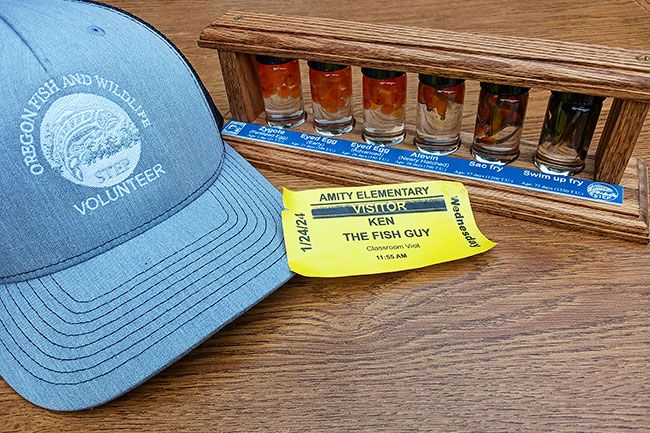Ken Dollinger: Hatch and release


Alerted by the announcement from the office, the principal, staff and teachers — even a custodian — converged on the grade school lobby where I stood with a small cooler at my feet. A semi-official parade marched me past classrooms where students at their desks peered curiously into the hall.
Indeed, the fish guy had arrived — or, more accurately, the fish eggs.
Twice a year, tens of thousands of fish eggs — salmon in the fall, trout in the winter — are delivered to hundreds of Oregon schools. An element of the Oregon Fish & Wildlife Department’s Salmon Trout Education Program, known as STEP, the effort is called “Eggs to Fry.”
Eggs are delivered by volunteers and placed into special aquarium tanks in participating elementary and secondary classrooms. Over the following weeks, students closely monitor water conditions, egg development and hatching.
When the baby fish have grown enough — to the almost two-inch stage called “fry” — students at participating schools release them into nearby streams.
Teachers use the experience for general science, biology and environmental lessons. Often, volunteers are called on to make class presentations and conduct question-and-answer sessions.
Giving each school individual attention takes a lot of effort by volunteers, but also proves reliably fun and satisfying.
Students, teachers and staff greatly appreciate the volunteers, welcoming them enthusiastically. And the questions kids ask can be quite entertaining.
I first got involved eight years ago when the Tualatin Valley Chapter of the Northwest Steelheaders’ Association sought volunteers from its membership to deliver eggs to schools in Washington County. Weeks later, members were again asked to volunteer to help with the fry releases by participating classes.
Three years later, I discovered three Yamhill County schools were also participating and needed egg deliveries. Since Yamhill was my home county, I offered to take care of those schools personally, rather than volunteer in Washington County.
Since then, participation in Yamhill County has expanded to 16 elementary, intermediate and high school classes in Amity, Carlton, Dundee, Newberg, Sheridan and Yamhill.
Each class has specific schedules that have to be worked around, making delivery arrangements difficult. Weather and travel time further complicate matters.
Once I collect the eggs at the hatchery in Clackamas County, the clock starts ticking. The overriding concern is to get the eggs safely into water as fast as possible.
The eggs can be kept wet and cool for only about 36 hours and still be viable. This means eggs collected early one day must be in tanks by late afternoon the next day.
Two years ago, I realized that with the increasing number of participating schools, I could not collect all the eggs and make all the deliveries by myself — particularly with a half-hour class presentation often included.
I made online Facebook appeals to angling groups. Two fellow anglers and military veterans responded by volunteering to help me deliver eggs in the county.
The week of Jan. 20-24, I will be joined by Boyd Blanchard of Salem and Jon Able of Newberg in delivering some 2,000 trout eggs to a dozen classrooms across Yamhill County.
So, for each school, the “fish guy” will indeed be there, making it a happy moment for students, teachers and staff — as well as volunteers!






Comments